#snout beetle
Explore tagged Tumblr posts
Text

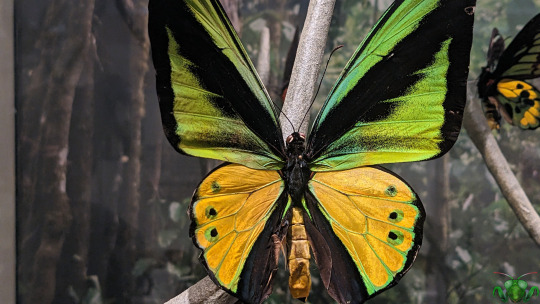
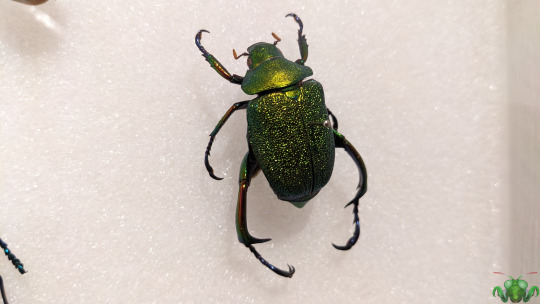


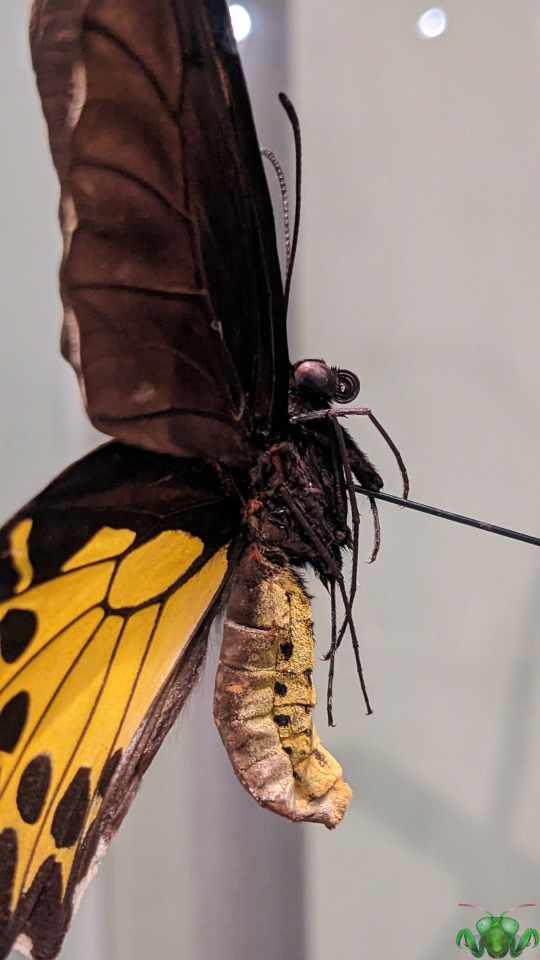


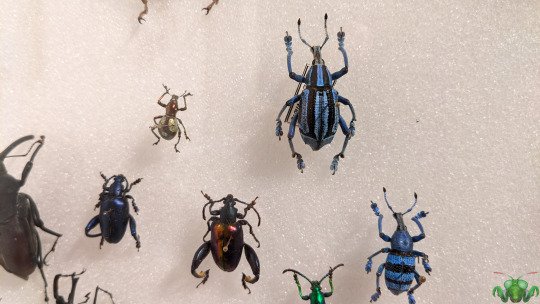
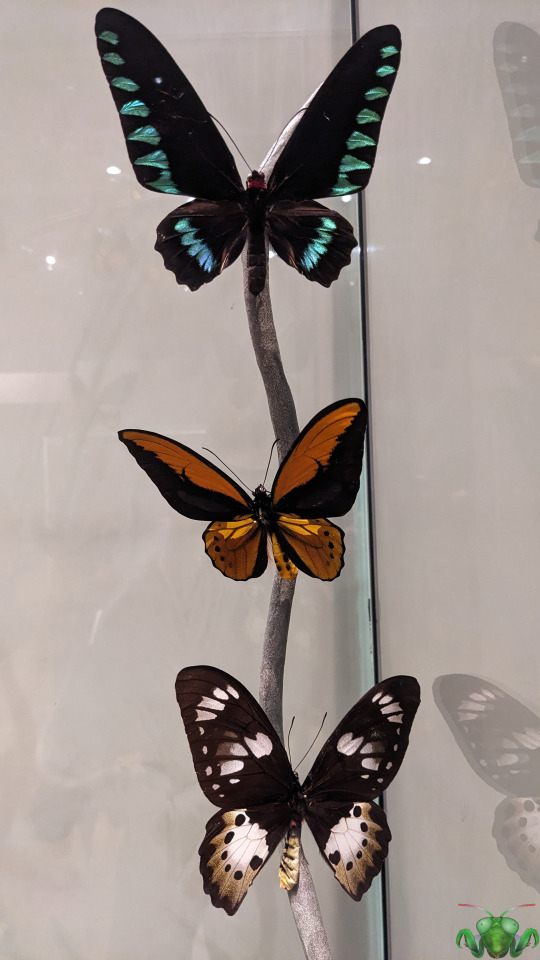
Royal Ontario Museum - Insect Exhibits 2
Good news, I managed to squeeze in one more insect visit to the Royal Ontario Museum before the end of the year! As such the living denizens of the natural history section will be showcased one more time before 2024 is upon us. Before that, I'd like to take a moment to share new pictures from the insect displays within the natural history section. Compared to the pictures from 2019, these are a quantum leap forward in terms of clarity and use of lighting. The Peanut Bug - Fulgora laternaria (Picture 1) has always been a favorite of mine, so I always take the opportunity to go and visit it and marvel at the ridiculousness of the size of that head protuberance. Though a bit oversized, such a head fixature has an important function: knocking it against a tree is its mating call. If the attention they draw is unwelcome, they can startle their voyeurs with the eyeball spots on its wings. These markings are more prominent in live specimens; this pinned specimen's colors have faded away over time. You can even compare the images from 2019 and you'll see a difference in color saturation. Otherwise, when this Hemipteran is at rest, it looks similar to a helmeted Cicada with more opaque wings. In terms of relations however, the Peanut Bug is more closely related to the Spotted Lanternfly of Asia, as they are both part of the family Fulgoridae.
I'm also particularly fond of the texture of the Shining Leaf Beetle's (Picture 3 - Chrysophora chrysochlora) ornate emerald shell, and the tropical colors of the Weevils on display. Especially the blue Eupholus specimens (Picture 9 - right side specimens). Finally, I also noticed a new section (to me) in the animal gallery featuring Butterflies of the tropics and I'm still amazed at how large they are. Many of these iridescent, vibrantly-colored specimens have wingspan sizes that can be as large as a hand! They are more appropriately known as Birdwing Butterflies and they are all giants compared to the Butterflies that grow in the temperate climate of Toronto! The specimens focused on here are the Green Goliath Birdwing (Ornithoptera goliath - Pictures 2, 5 and 6), the black-and-white female Priam's birdwing (Ornithoptera priamus - Picture 8), the male Palawan Birdwing (Trogonoptera trojana - Picture 10 top), Wallace's Golden Birdwing (Ornithoptera croesus - Picture 10 middle) and the female Paradise Birdwing (Ornithoptera paradisea - Picture 10 bottom), but there are many more in the background. To glimpse these in person is wonderful, but seeing them flying around in their tropical environments would be a magical experience!
Pictures were taken on December 19, 2023 with a Google Pixel 4. Please come and see the bugs if you can, both the living insect specimens and the many displays. You may go to this link and view a post from earlier: ROM - Insect Exhibits 1.
Since these insect collections belong to the ROM, I’ve marked them with the Mantis icon. As well, Happy first day of Winter (tomorrow)!

#jonny’s insect catalogue#insect#royal ontario museum#insect showcase#ROM insect#insect display#insect exhibit#pinned insects#lepidoptera#coleoptera#hemiptera#butterfly#birdwing butterfly#beetle#weevil#snout beetle#heteroptera#true bug#peanut bug#lanternfly#lantern fly#scarab beetle#first day of winter#toronto#december2023#2023#entomology#nature#invertebrates#arthropods
12 notes
·
View notes
Text
Snout Beetle | Flower Weevil #shorts #weevil #snoutbeetle #bytesizeambs
youtube
This Flower Weevil is a rare/thought to be extinct genus, called Odontocorynus umbellae. This specific genus of Flower Weevil is most commonly seen munching on flowers such as daisies, sunflowers and the like.
More info on Odontocorynus umbellae will be in the description of this YouTube short. As always, the quality is better when viewed via YouTube.
#bytesizeambs#youtube#youtube shorts#shorts#bytesizeambs shorts#nature#hiking adventures#cute critters#weevil#flower weevil#odontocorynus umbellae#odontocorynus salebrosus#snout beetle#true weevils#weevils#cute bugs#subscribe#cute beetle#cute beetle on a flower
6 notes
·
View notes
Photo



Spined straight-snouted weevil, Pogonapion kuscheli, Brentidae
Found in New Caledonia
Photos by damienbr
#animals#curators on tumblr#insects#bugs#beetle#weevil#straight snouted weevil#brentidae#spined straight snouted weevil#Pogonapion kuscheli#one nice bug
3K notes
·
View notes
Text
Thank u all sm for the help identifying him! He is a weevil/snout beetle for anyone else who didn’t know! :D
GUYS IVE RETURNED TO SHOW YOU A BUG!!!!!!!

[ID: an image of a very small, brown bug with a long snout and antennae coming off the snout. The video shows the bug turning around before flying off.
End ID]
He’s my friend now c:
Also does anyone know what kind of bug he is?
53 notes
·
View notes
Text



Revolution...

Where's my love?💔
(F) 산길쭉바구미 (Lixus fasciculatus)
#photographers on tumblr#my photography#original photographers#art#lensblr#photography#insect photography#female has longer snout than male#wildlife photography#macro photography#nature photography#nature#naturecore#insect#bug#weevil#beetle#beetles#bugblr#entomology#long nose#finding love#snout#june 3 2024#no ai#noai#no to generative ai
34 notes
·
View notes
Text
Uncharismatic Fact of the Day
Aptly named, the New Zealand giraffe weevil is the longest beetle in Aotearoa. Males can reach a length of 90 mm (3.5 in), half of which is their elongated snout. These extraordinary appendages are used to battle for access to females, which have much shorter snouts.
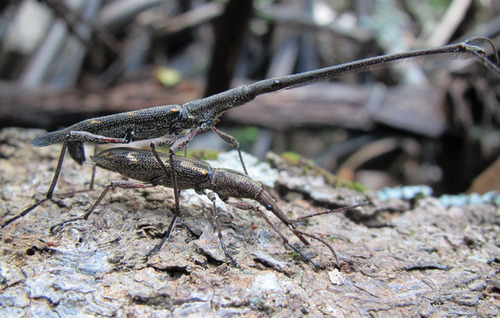
(Image: A mating male (top) and female (bottom) New Zealand giraffe weevil () by Christina Painting)
If you like what I do, consider leaving a tip or buying me a ko-fi!
#new zealand giraffe weevil#Coleoptera#Brentidae#straight snouted weevils#weevils#beetles#insects#arthropods#uncharismatic facts
249 notes
·
View notes
Note
Bu I have a feeling you would really enjoy COS' new monthly

At least I know I do
YOURE DAMN RIGHR I DO….!!!!! ITS A BEETLE!!!! WE NEED MORE BUGS DESPERATELY!!!!
Goddd Austroraptors is SO COOL… they made Idra too,, no clue how they keep coming out with critter after critter but i love ALL of their concepts we needed them SO BAD
ALSO ?? VETEMORTEM?? WAAUUGHHH IT LOOKS SO COOL… THIS UPDATE IS ACTUALLY SO GOOD
#they called it an acorn weevil for some reason despite obviously being a beetle#it doesn’t have the snout to be a weevil idk who wrote the announcement#MORE BUGS!!!!!!!!!#VETE HAS SUCH A SPECIAL PLACE IN MY HEART I WAS BUCKWILD CRAZY WHEN I SAW THE CONCEPT IN THE UNRELEASED CREATURES TAB#NOW ITS EVEN BETTER#(im normal)
16 notes
·
View notes
Text

My son, Jansport Backpack
#chalk art#sidewalk chalk#chalk#bug#long snouted beetle#weevil#my boy <3#little guy#my art#bugs#tw bug
6 notes
·
View notes
Text
EL GORGOJO QUE SE ESCURRIÓ POR LA RENDIJA DE MIS DEDOS
Anoche, antes de acostarme, me encontré un gorgojo entre la ropa recién lavada: apenas 5 mm, obscuro, una prominente trompa; bellísimo y delicado, como todo coleóptero, como lo son también las aves paseriformes, radicales antónimos del ser humano. Lo puse con ternura sobre la palma de mi mano y la cerré con suavidad.

De un estante saqué emocionado una de mis guías de coleópteros para su identificación, y abrí el libro y la mano, pero ni rastro del picudo: se había escurrido por la rendija de mis dedos y me quedé sin saber cuál era su nombre: 5489 géneros y 86100 especies en el mundo, un gorgojo, que por unos segundos me perteneció y leyó mi vida paseándose por las líneas de la palma de mi mano.
[8/II/2024]
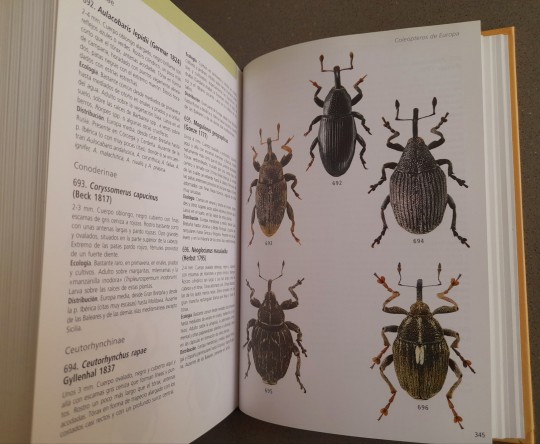
7 notes
·
View notes
Text
i show up at work an hour early and the doors are locked and its raining but the Blessed and Powerful facility staff let me in. i owe them my life
#ztext#also this morning i was having such a nice dream#i was catching a beetle!!! he was soooo pretty black and gold and had a little snout bit whatever theyre called#a horn#and he was in my house and flying around and i was chasing him around#also happy pi day
0 notes
Text
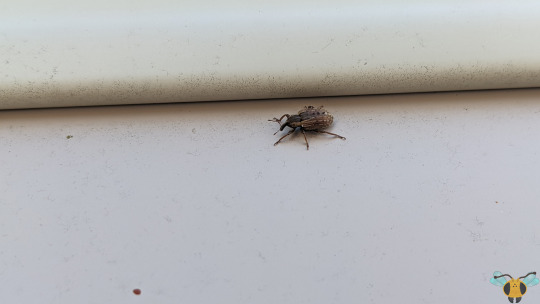



Alfalfa Weevil - Hypera postica
You may need to zoom in on these images to see the identification markers of this bulky little brown bean. The dark dorsal band is very prominent, but what might be missed is the thinner stripe along the thorax within that band. There can also be curved "m-shaped" markings where the wingcase meets the thorax and rest of the wingcase appears hairy, with some lines resembling stitching. Otherwise, this insect has all the features of a traditional Snout Beetles and it's a lovely snout at that! At the end of that snout sit the antennae, and while it might look like they could get it the way of feeding, they can fold backwards and give the snout more room to eat or to tunnel while still providing valuable sensory information. They must work well, as the bean let go and fell into the grass below when I tried to get a closer look. Hopefully the next Weevil found is less skittish, but I'm not sure when that will be as there was no alfalfa to be found in the surrounding area.
As the common name hints, the alfalfa crop is this Beetle's primary source of food, both as a larva and as an adult! This (combined with their ravenous feeding potential) gives this specie status as a significant pest in North America. Their numbers can be successfully managed via certain parasitic Ichneumon Wasps which target the Beetle larvae. Since the insect solution to control the pest population and maintain stability with alfalfa production was imported, this was likely a huge gamble at the time. Careful monitoring of the ecosystem is ongoing to determine if it was the right call in the long term. It's certainly practical to monitor your plants and see what insects are nibbling at the leaves and flowers. The larvae here grow large from skeletonizing alfalfa leaves! While reviewing the damage caused by the grubs and seeing images of captured specimens, Alfalfa Weevil grubs came to remind me of Sawfly larvae since they can be numerous on their host plants and the have ravenous appetites! They also have colorful, soft, cylindrical bodies with prominent (differently-colored) heads. If you find a green Caterpillar-like creature with a brown head rummaging around your plants, you've probably found a young Alfalfa Weevil. if there is also a white stripe running down the insect's "spine" and no legs, it's time for pest control.
Pictures were taken on April 11, 2022 with a Google Pixel 4.
#jonny's insect catalogue#ontario insect#weevil#alfalfa weevil#beetle#snout beetle#coleoptera#insect#toronto#april2022#2022#nature#entomology#invertebrates#arthropods#animals#photography
4 notes
·
View notes
Text

HiveWing. Overcomplicated. But also not?
Joy and Tui, y'all cooked, I just put my own spin on it.
Details and explanation below.
Otherwise, next week are LeafWings! See you then!
More overcomplicated dragons.
I thought I had fun with the RainWing.
I was wrong. This was FUN.
Of all the ones I've done this design is nearly identical to the original. I'm not saying that to toot my own horn, it just somehow came out like that because I found the perfect references (and avoided altering the skull too much lol). Let's talk about them!
First, an unlikely one: iguanas. I originally picked them for their spines, but when I saw their eyes and large jaw scale (or whatever it is) I knew I'd found the new reptile base for the HiveWings. I also included the little snout and under-the-chin spikes they have; it just fits perfectly for a beetle-and wasp inspired dragon.
Speaking of beetles and wasps: I took heavy inspiration for the HiveWing's 'beak' from wasp mandibles. I love the way the mouth looks originally and wanted to preserve and exaggerate it. So, when creating the beak, I combined the jagged jaws of wasps with the curved beak of an African fish eagle. To top it off I referenced the rhinoceros beetle (obviously) for the horn on the nasion.
(The nasion is a point where your nose meets your forehead between your eyes). The HiveWing's horn isn't directly on it but I couldn't think of another word.
I actually wanted the entire head to have an insect-like feel, that's why the snout and forehead are built from large plates (once again referenced from rhino beetles).
Lastly, besides the lion-inspired teeth, an incredible animal called the nyala was responsible for the back horns. Whoever photographed that bull in that exact angle: thank you.
Let's see how badly I mess up the LeafWings next week. If you've read this far, perhaps let me know if you would like to see all of my personal headcanons for the LeafWings? For Alate Atta's Ascension I use a design where they have four wings and extra frills to look like leaves. I can do one closer to canon where they're more like a Pyrrhian tribe and another where they visually fit in with the other Pantalan tribes. Let me know!
#wof#wings of fire#wof art#my art#digital art#hivewing#wof hivewing#wof fanart#Overcomplicating the WOF Tribes
595 notes
·
View notes
Note
howdy!
saw this guy in my house earlier (and later let him out via the window after i was done taking pictures). i tried my hand at identifying him myself but couldnt get anything more specific than "some kinda beetle/weevil??" it can fly from what ive seen, if that helps.

heres the best picture i got which he very kindly stood still for! pleasant little guy, it was very nice to meet him :)
It's a straight-snouted weevil in the family Brentidae. Without a location best I can say is probably an oak timberworm beetle.
134 notes
·
View notes
Note
got anything fun in orange?
ORANGE YOU GLAD I DIDNT SAY BANANA?!?!?!
Yeah, I think I have something for you...

Banded Orange Longwing (Dryadula phaetusa), family Nymphalidae, Veracruz, Mexico
Poisonous.
photograph by Bill Berthet


Spix’s Saddleback Toad aka Pumpkin Toadlet (Brachycephalus ephippium), family Brachycephalidae, endemic to Atlantic Rainforest in SE Brazil
Poisonous.
This is the most common of the Saddleback Toads, Brachycephalus spp.
As with other Brachycephalus, they lay a few eggs in moist terrestrial locations, and the young live as tadpoles in the eggs, and then hatch out as froglets.
Adults reach a max. snout vent length of up to 19.7 mm (0.78 in).
They are actually unable to hear their own advertisement calls, as their ears are underdeveloped.
They also do not hop, but instead slowly crawl across the forest floor.
photographs by Diogo B. Provete and Ariovaldo Giaretta

Sahara Mastigure aka Geyr’s Dabb Lizard (Uromastyx geyri), family Agamidae, found in north Africa
photograph by Manfred Werner

Giant Bamboo Lady Beetle (Synonycha grandis), family Coccinellidae, Luzon, Philippines
Body length is about 13 mm, which is large for a ladybug.
Feed on bamboo aphids.
photograph by Wilhelm Turtle Tan
285 notes
·
View notes
Text


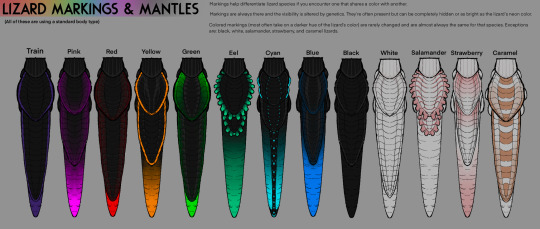

Finally got around to finishing this houugh... it was a lot of work but I really like the end result!! Naturally, I'll try my best to list some of the thoughts I have in mind for these guys below. Long post ahead!
These lizards are intended to be ALMOST fully arthropod-like but due to my lack of understanding of bug anatomy and creative liberties, they are in that gray spec bio area so don't take any inconsistencies too seriously (or rather, fuck logic, and accept them how I describe them regardless)
Inspirations: - my lesser detailed lizard design - my friend's slugcats - wasps for the head contours, various insects for the exoskeleton guidelines, caterpillars, various stylistic slugcats across the #rainworld tag - the burning need for something more detailed and cool in my drawing vocabulary
The actual meat of the post; extra facts: - Lizards are related to slugcats (in my au, if you wanna call it that?) or at least the very early version of them. This idea is borrowed from this post and in my au, lizards evolve a similar tail to a slugcat's to aid in propelling themselves through tight spaces, acting as a 5th limb. - Similar to my old vulture post, lizards share a similar lifecycle. The majority of the larval stage is spent underground and in tight spots, far from their main predator. Lizard larva will undergo pupation similar to how beetles do, leaving behind broken cavities in pipes where carnivorous plants favor to take root. Additionally to the vulture's terrible parental drive, they often mistake their own larva for lizard hatchlings. - A lizard's skin is leathery and retains moisture for quite a while. Some lizards have a thicker layered mantle than others, allowing them to take punctures to the abdomen and still recover. - Not pictured, but will be described, are a few outliers to the standard lizard body plan. Caramels have muscular hind legs akin to a grasshopper but this means their legs cannot slot together and thus they have a wider leg splay than other species. Eels and salamanders are not lizards but lizard mimics. Yellow lizards' antennae attach to a hump on the snout rather than the rear of the head as seen here. Cyan lizards' mantles are more square shaped due to their leap drums on either side of their bodies and have a 3rd mantle that runs the length of their tail and caps the tailtip. - Cyan lizard's organs are called leap drums and act similarly to our lungs. They are a ring of muscle which contracts and acts as a spring loaded mechanism to propel the creature via combustion through a mysterious chemical process. Because the color of debris left behind during a leap share the same color as the lizard, perhaps they are discarded scales, formerly in place to protect the cavities housing the explosion. - They have similar organs to vertebrates within their abdomen, probably surrounded by cartilage. (not that important, I haven't thought that much about this) - (More may be added later as I remember)
#myart#rainworld#rainworld lizard#rain world lizard#rw lizard#bug#insect#bugs#insects#rainworldbuilding
2K notes
·
View notes
Text
(cc blog for any future stuff @resi-sim-stuff)
some werewolf presets and sliders i made and thought I'd share :-) all of these should be disabled for random, but if i missed anything & some townies show up with em let me know!
Werestache

download (sfs)
presets in the mouth category to give your wewos some scruff! i recommend using these in conjunction with VecD0e's extended muzzle sliders for a more doglike look.
Werecat ears & snout
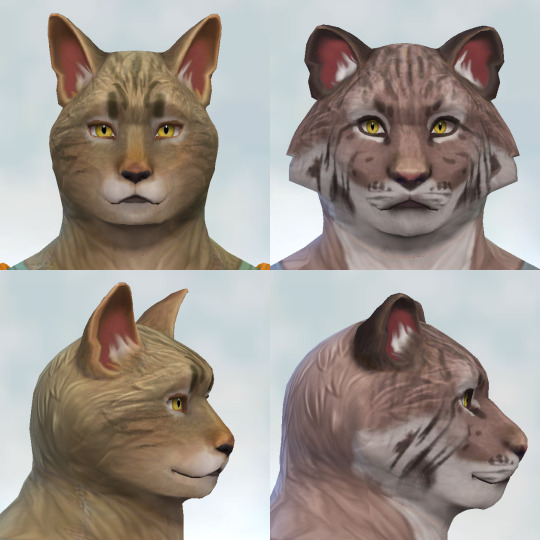
Cat ears (sfs) | Big cat ears (sfs) | Cat snout (sfs)
Cat snout preset can be found in the nose category, both of the sims above have it! The nose colors I have on them are a personal edit, but they're buggy so I haven't included them, if I get any working I'll add em.
Sliders
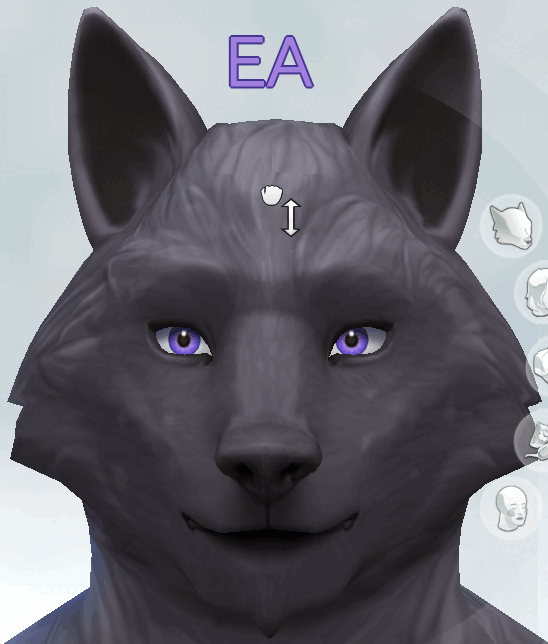


Forehead height (sfs) | Ear tilt (sfs) | Pupil size/shape (sfs)
The eye sliders aren't great but they get the job done, I wanted to give them a large range in size- they aren't really meant to be used at their extremes. Goat eyes option for the sillyguys...
Star ears

download (sfs)
was thinking about alien werewolves thats all... ears are too tall to get a good picture of in cas
____________________
I made a sheepdog guy using some accessory bangs from Atashi77, the ears here are another preset by me but there's something off with the shadows on it (the ears are not painted grey, they're the same color as the rest) that I can't figure out, I'm not great at blender so if anyone knows whats up I'd appreciate it! you can download them here, but they may look wonky so oops
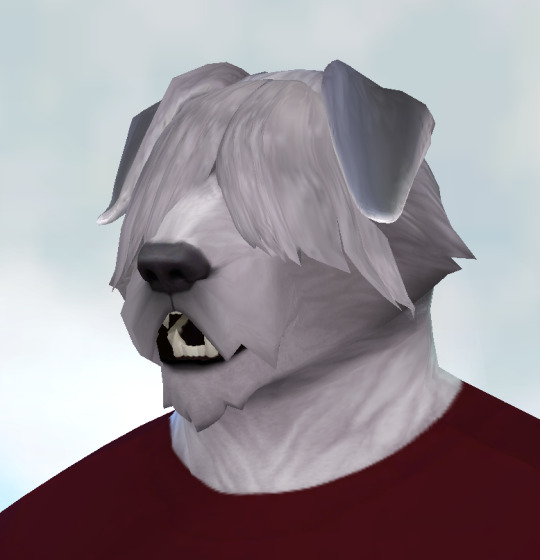
also wanted to link the werewolf CC by other people I used in this post bc they're great
beetle eyes for werewolves by squea, converted by octetsica
bigger werewolf teeth & inner mouth color detail by sychik
natural werewolf skin override by eachuisge
this is my first time posting cc so let me know if anythings broken or wonky! thank youuu
#sims 4 werewolf cc#sims 4 werewolf sliders#sims 4 werewolf presets#sims 4 sliders#ts4 werewolf cc#sims 4 presets
396 notes
·
View notes